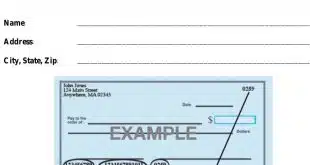PayPal Inc.’s 1-year-old person-to-person payment application for financial institutions is catching on with banks, says the PayPal executive charged with marketing the product, part of a collection of payment services PayPal introduced when it opened its platform to outside developers last year. Dan Schatt, senior director and head of financial innovations at San Jose, Calif.-based PayPal, won’t reveal how many financial institutions are live on the P2P app, deferring any announcement to next week, when PayPal will host its second annual developer’s conference in San Francisco.
But “the number is significant,” Schatt tells Digital Transactions News, adding that adopting institutions include “top 10 institutions all the way down to $100-million credit unions.” The names of at least some of the client institutions will be announced at next week’s conference, known as PayPal X Innovate 2010. One early adopter is Mercantile Bank of Michigan, whose version of the mobile app became available on Apple Inc.’s App Store in September. So far the app has garnered a five-star rating from seven users. Schatt says PayPal will also announce a version of the service that lets users convert rewards points into actual currencies.
PayPal is offering the P2P application through S1 Corp. and Fidelity National Information Services Inc., both major providers of processing services to banks. Though the app, which S1 is making available for mobile banking and FIS for online banking, refers to the P2P service as being “powered by PayPal,” it is otherwise branded by the adopting financial institutions. Senders of funds need not have a PayPal account to use the service. Recipients who do not already have an account are prompted to start one, a process PayPal has streamlined. “It takes a minute,” says Schatt. Funds can be sent to a recipient’s e-mail address or mobile-phone number.
Schatt says banks are responding to the service as a way to cut the expense of handling checks and to get a piece of the remittance market. “Banks only have 3% of the remittance market,” he says. “They’ve lost it all to Western Union. You can take back markets you’ve historically lost.” Also appealing to banks is the opportunity to brand the messaging that goes out to recipients, many of whom are likely to be local and hence potential customers, Schatt adds. Messages can encourage recipients to link their funds to cards issued by the bank, and to move their deposits.
While he won’t discuss the specifics of how the service is priced, Schatt says the fee to financial institutions is a flat price per transaction. “It’s less than the cost of a stamp,” he says. “It’s significantly reduced from what they’d have to pay for a paper check.” PayPal charges its transaction fee to S1 and FIS, which then reprice the service to its client institutions. Banks can determine whether they want to charge customers for using the service.
Introduced by PayPal last November as one of a number of new products that depend on the company’s new open application programming interfaces (APIs), the P2P service credits recipients’ accounts immediately. PayPal then receives funds from paying banks via the automated clearing house network.







